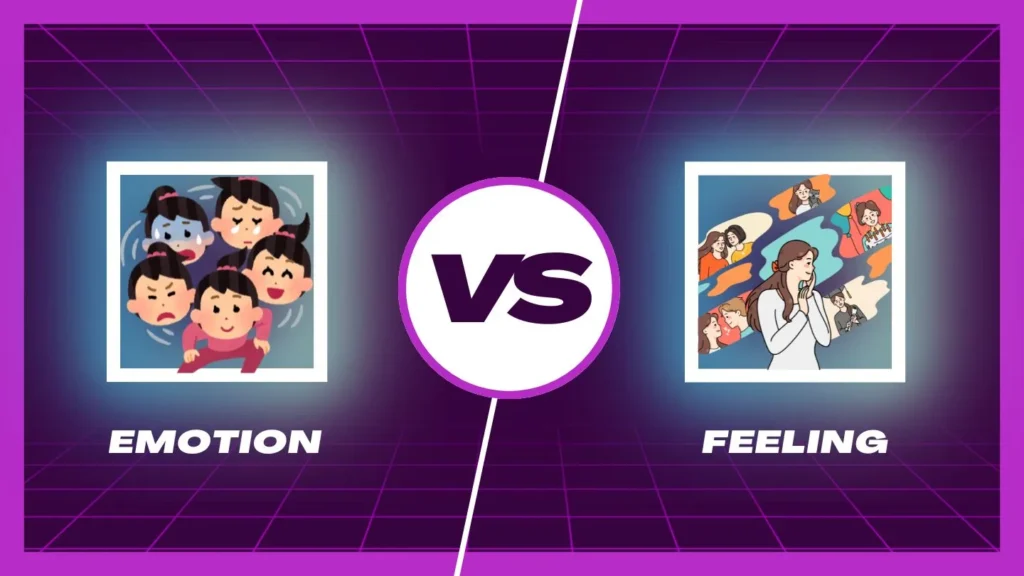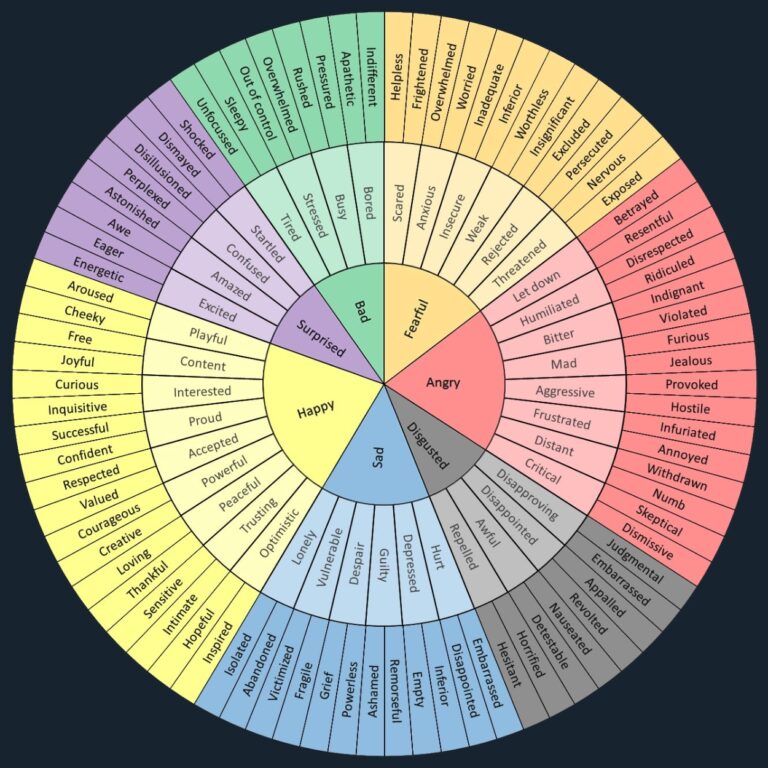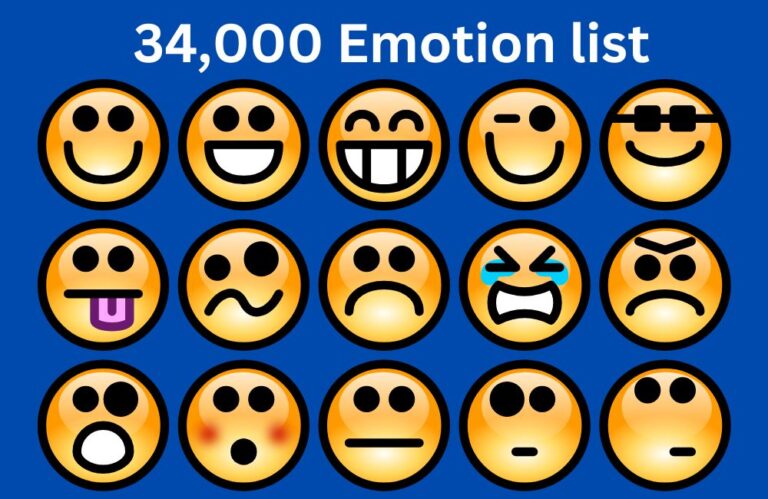
In the realm of emotional intelligence, the terms feelings and emotions are often used interchangeably. However, they serve distinct roles in our emotional experience.
Understanding the difference between the two can help us navigate our inner world with greater clarity and improve our relationships and decision-making. Let’s delve into the nuances of feelings and emotions, their differences, and real-life examples to illustrate these concepts.
What Are Emotions?
Emotions are automatic, physiological responses to stimuli, designed to alert us to what’s happening in our environment. They are instinctual and universal, experienced by everyone regardless of culture or background. Emotions serve as quick signals to help us survive and thrive.
For instance:
- Fear prepares us to flee from danger.
- Anger motivates us to address perceived injustices.
- Joy encourages us to pursue positive experiences.
Emotions arise suddenly and often without conscious thought. They are short-lived but powerful in driving our initial reactions.
What Are Feelings?
Feelings are the conscious interpretations of emotions. They emerge as we reflect on and assign meaning to our emotions, shaped by personal experiences, beliefs, and context. Unlike emotions, feelings develop over time and can linger longer.
For example:
- The emotion of fear might turn into the feeling of anxiety when you start worrying about future dangers.
- The emotion of sadness could evolve into a feeling of loneliness if you interpret it as being disconnected from others.
Feelings give us the ability to process and articulate our emotional experiences in meaningful ways.
Key Differences Between Feelings and Emotions
| Aspect | Emotion | Feeling |
|---|---|---|
| Origin | Physiological and automatic | Mental and reflective |
| Speed | Immediate | Develops over time |
| Consciousness | Often unconscious | Fully conscious |
| Universality | Shared by all humans | Influenced by individual experiences |
| Purpose | Alerts us to immediate needs or threats | Helps us interpret and respond thoughtfully |
Why Understanding the Difference Matters
Recognizing the distinction between feelings and emotions is crucial for improving emotional intelligence. Here’s why:
- Better Emotional Regulation
Knowing that emotions are temporary can prevent overreacting. Reflecting on feelings allows for more thoughtful responses. - Enhanced Communication
By understanding and naming emotions and feelings, we can express ourselves more clearly and foster deeper connections. - Improved Decision-Making
Differentiating between emotional impulses and reflective feelings helps in making well-informed choices. - Greater Self-Awareness
Understanding triggers and responses helps in identifying patterns and improving personal growth.
Feelings vs. Emotions: Examples
Here are real-life scenarios to illustrate the differences between emotions and feelings:
| Scenario | Emotion | Feeling |
|---|---|---|
| You see a snake on a hiking trail. | Fear: A sudden spike in heart rate and the urge to flee. | Anxiety: A lingering worry about encountering more snakes. |
| Your coworker takes credit for your idea. | Anger: A surge of frustration and irritation. | Resentment: Feeling disrespected and undervalued over time. |
| You receive unexpected praise at work. | Joy: A rush of happiness and excitement. | Pride: A sense of accomplishment and confidence in your abilities. |
| You fail an important test. | Sadness: A wave of disappointment and low energy. | Shame: A feeling of inadequacy or self-doubt. |
| You narrowly avoid a car accident. | Fear: A burst of adrenaline and heightened alertness. | Gratitude: A sense of relief and thankfulness for being unharmed. |
| You achieve a personal goal. | Joy: A spike in positive emotions and elation. | Fulfillment: A deeper sense of satisfaction and meaning. |
| Your best friend forgets your birthday. | Disappointment: A quick sense of being let down. | Hurt: A prolonged feeling of being unimportant to them. |
| You watch a movie about injustice. | Anger: An immediate emotional reaction to unfairness. | Empathy: A reflective feeling of understanding others’ struggles. |
| You’re about to give a presentation. | Anxiety: Racing heart and sweaty palms as you anticipate the event. | Confidence (after success): A sense of pride from overcoming the challenge. |
| You see a heartwarming act of kindness. | Joy: A momentary emotional uplift. | Inspiration: A reflective feeling encouraging you to spread kindness. |
Practical Steps to Bridge the Gap
- Name the Emotion
Identify the raw emotion you’re experiencing. Is it anger, fear, or joy? - Pause Before Reacting
Take a moment to reflect on your emotional response. What is it telling you about the situation? - Explore the Feeling
Consider how your personal experiences and thoughts shape the emotion into a feeling. What meaning are you assigning to it? - Express Yourself Clearly
Share your feelings with others using “I feel” statements. For example, “I feel hurt because I value our friendship.”
are feelings and emotions the same
No, feelings and emotions are not the same. Emotions are automatic, instinctual responses to stimuli, such as fear, anger, or joy. They happen quickly and are often unconscious.
On the other hand, feelings are the conscious interpretations of these emotions, shaped by personal experiences, thoughts, and reflection. While emotions are immediate and universal, feelings develop over time and can vary from person to person.
Conclusion
Emotions and feelings are intricately connected but serve different purposes. Emotions are instinctual and universal, while feelings are reflective and shaped by individual experiences. By understanding the difference, you can improve your emotional intelligence, foster healthier relationships, and make more thoughtful decisions.
Ready to explore your emotions and feelings more deeply? Start by naming your emotions and reflecting on the feelings they create—you might discover a whole new level of self-awareness.






